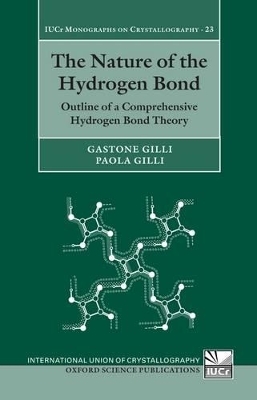
The Nature of the Hydrogen Bond
Outline of a Comprehensive Hydrogen Bond Theory
Seiten
2009
Oxford University Press (Verlag)
978-0-19-955896-4 (ISBN)
Oxford University Press (Verlag)
978-0-19-955896-4 (ISBN)
This book defines, for the first time, the rules for predicting H-bond energies and geometries from the properties of the interacting molecules. This new knowledge is used to investigate the molecular mechanisms in systems relevant to chemistry, biochemistry, pharmacology, crystallography, and material sciences.
Hydrogen bond (H-bond) effects are known: it makes sea water liquid, joins cellulose microfibrils in trees, shapes DNA into genes and polypeptide chains into wool, hair, muscles or enzymes. Its true nature is less known and we may still wonder why O-H...O bond energies range from less than 1 to more than 30 kcal/mol without apparent reason. This H-bond puzzle is re-examined here from its very beginning and presented as an inclusive compilation of experimental H-bond energies and geometries.
New concepts emerge from this analysis: new classes of systematically strong H-bonds (CAHBs and RAHBs: charge- and resonance-assisted H-bonds); full H-bond classification in six classes (the six chemical leitmotifs); and assessment of the covalent nature of strong H-bonds. This leads to three distinct but inter-consistent models able to rationalize the H-bond and predict its strength, based on classical VB theory, matching of donor-acceptor acid-base parameters (PA or pKa), or shape of the H-bond proton-transfer pathway.
Applications survey a number of systems where strong H-bonds play an important functional role, namely drug-receptor binding, enzymatic catalysis, ion-transport through cell membranes, crystal design and molecular mechanisms of functional materials.
Hydrogen bond (H-bond) effects are known: it makes sea water liquid, joins cellulose microfibrils in trees, shapes DNA into genes and polypeptide chains into wool, hair, muscles or enzymes. Its true nature is less known and we may still wonder why O-H...O bond energies range from less than 1 to more than 30 kcal/mol without apparent reason. This H-bond puzzle is re-examined here from its very beginning and presented as an inclusive compilation of experimental H-bond energies and geometries.
New concepts emerge from this analysis: new classes of systematically strong H-bonds (CAHBs and RAHBs: charge- and resonance-assisted H-bonds); full H-bond classification in six classes (the six chemical leitmotifs); and assessment of the covalent nature of strong H-bonds. This leads to three distinct but inter-consistent models able to rationalize the H-bond and predict its strength, based on classical VB theory, matching of donor-acceptor acid-base parameters (PA or pKa), or shape of the H-bond proton-transfer pathway.
Applications survey a number of systems where strong H-bonds play an important functional role, namely drug-receptor binding, enzymatic catalysis, ion-transport through cell membranes, crystal design and molecular mechanisms of functional materials.
Gastone Gilli Full Professor of Physical Chemistry and Director of the Centre for Structural Diffractometry University of Ferrara, Italy Dr Paola Gilli Researcher of Physical Chemistry University of Ferrara, Italy
Introduction ; 1. A century of hydrogen bond (HB) ; 2. Generalities, definitions and preliminary classification ; 3. Modeling the HB by crystallographic methods ; 4. Modeling the HB by thermodynamic methods ; 5. The empirical laws governing the HB. A summary ; 6. Outline of a novel transition state HB theory (TSHBT) ; 7. The strength of the HB. Definitions and thermodynamics ; 8. The role of strong HBs in nature. A gallery of functional HBs ; References
| Erscheint lt. Verlag | 25.6.2009 |
|---|---|
| Reihe/Serie | International Union of Crystallography Monographs on Crystallography ; 23 |
| Zusatzinfo | 120 b+w line drawings and 4-page colour plate section |
| Verlagsort | Oxford |
| Sprache | englisch |
| Maße | 163 x 241 mm |
| Gewicht | 705 g |
| Themenwelt | Naturwissenschaften ► Biologie ► Genetik / Molekularbiologie |
| Naturwissenschaften ► Chemie ► Physikalische Chemie | |
| Naturwissenschaften ► Geowissenschaften ► Mineralogie / Paläontologie | |
| Naturwissenschaften ► Physik / Astronomie | |
| ISBN-10 | 0-19-955896-5 / 0199558965 |
| ISBN-13 | 978-0-19-955896-4 / 9780199558964 |
| Zustand | Neuware |
| Haben Sie eine Frage zum Produkt? |
Mehr entdecken
aus dem Bereich
aus dem Bereich
50 Meilensteine der Genetik
Buch | Hardcover (2022)
Librero b.v. (Verlag)
9,95 €


